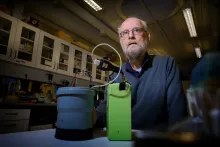
Molecular biology focuses on various aspects of cellular and biological function, from how DNA is replicated, repaired and expressed, how cells are built and function, and how complex organisms develop from a single cell.
The main research areas within the Institute are topics like
- How do neurons and glial cells develop and influence diseases? (SRF)
- What is the role of hedgehog signalling in development of bones and osteaoarthridis? (SS)
- Can the innate immunity be activated as a therapeutic intervention? (GHG)
- Which genetic factors influence the diversity of breast cancer subtypes? (LV)
- How do sequence variants affect protein structure and function? (GR)
- What are the main roles of pontin and reptin in neuronal cells? (SRF, ZOJ)
- Which factors influence microbial diversity in geothermal regions? (SB)
- Is the fish gut microbiome a good tool for stock identification? (HR, SP)
- Which genes and pathways associate with recent adaptations and rapid divergence? (SRF, ZOJ, AP, SP)
- How do the regulatory systems of development evolve? (AP)




